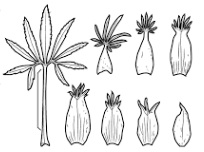 The concept of homology comes from a word in the Greek language that can be translated as “correspondence” or “agreement” . The term refers to the relationship that is created from similarities or identical features of two elements that are found in different areas or contexts.
The concept of homology comes from a word in the Greek language that can be translated as “correspondence” or “agreement” . The term refers to the relationship that is created from similarities or identical features of two elements that are found in different areas or contexts.
Homology, in this framework, appears between individuals who occupy the same positions or perform the same functions but in different places . There is a homology between the presidents of nations: even with the limitations and scope established by the laws in each case, a president is usually the most important public official of a country and the person most responsible for the administration of the State .
In the field of geometry , homology is the link established between the sides that, in each of the similar geometric figures, are located in the same position.
The idea of homology is also present in the context of biology . In this case, the relationship arises from the correspondence that is recorded between parts of different organisms that, although they share origin, have different functions.
This biological homology is a consequence of evolution . There may be homology between organs of two species if said structures come from the corresponding organ of a common ancestor. The passage of years may have made the current organs very different from each other beyond the homology given by the starting point.
To represent this concept in the field of biology, one of the most common examples is the one that can be recognized when observing fish, reptiles and mammals if we focus on their gill cartilage , jaw and middle ear, respectively. .
Let's see below a detailed explanation of this homology. It all started with fish that did not have a jaw, when their gill arches went through an evolution that led to the formation of this part of the mouth, which gave rise to the emergence of jawed fish. The original location of the gill arches was the bottom of the mouth; For this reason, when the slits began to be supported by cartilaginous elements, they were able to surround the mouth .
 The upper part of the second arch that supported the gill became the so-called hyomandibular bone, which supports the skull and unites it with the jaw. The moment in history arrived when vertebrates began to live outside of water, and this brought them new needs, such as hearing in a different medium, air. For this, the mandibular bone had the ideal characteristics, since it is close to the tympanic cavity and can easily propagate sound.
The upper part of the second arch that supported the gill became the so-called hyomandibular bone, which supports the skull and unites it with the jaw. The moment in history arrived when vertebrates began to live outside of water, and this brought them new needs, such as hearing in a different medium, air. For this, the mandibular bone had the ideal characteristics, since it is close to the tympanic cavity and can easily propagate sound.
In this way, the mandibular bone continued to serve to support the skull but also began to transmit sound. As the posture, way of moving and the structure of the jaw of terrestrial vertebrates changed, it was no longer necessary for the hyomandibular bone to reinforce the skull, so it began to serve exclusively its other function .
The last point of this homology takes us to mammals. Although in birds, reptiles and amphibians both the articular bone of the lower jaw and the quadratic bone of the upper jaw are formed by the posterior cartilage, in mammals they are articulated from a different region, so that they are free to other functions. The quadratic bone became the incus of the middle ear, while the articular became the malleus .
In the context of biochemistry , finally, homology is established between molecules with a similar origin and functions.
